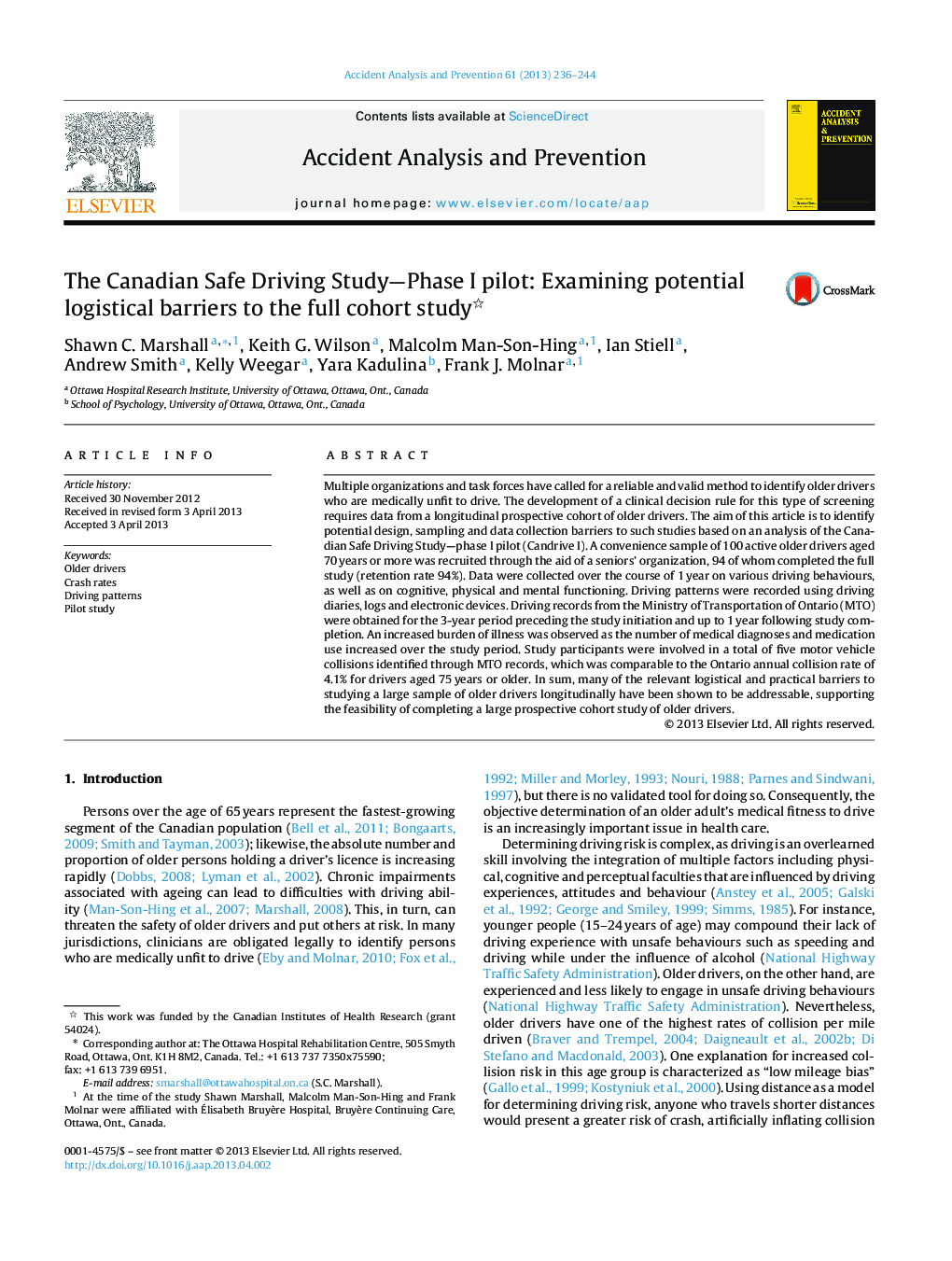| Article ID | Journal | Published Year | Pages | File Type |
|---|---|---|---|---|
| 572476 | Accident Analysis & Prevention | 2013 | 9 Pages |
Multiple organizations and task forces have called for a reliable and valid method to identify older drivers who are medically unfit to drive. The development of a clinical decision rule for this type of screening requires data from a longitudinal prospective cohort of older drivers. The aim of this article is to identify potential design, sampling and data collection barriers to such studies based on an analysis of the Canadian Safe Driving Study—phase I pilot (Candrive I). A convenience sample of 100 active older drivers aged 70 years or more was recruited through the aid of a seniors’ organization, 94 of whom completed the full study (retention rate 94%). Data were collected over the course of 1 year on various driving behaviours, as well as on cognitive, physical and mental functioning. Driving patterns were recorded using driving diaries, logs and electronic devices. Driving records from the Ministry of Transportation of Ontario (MTO) were obtained for the 3-year period preceding the study initiation and up to 1 year following study completion. An increased burden of illness was observed as the number of medical diagnoses and medication use increased over the study period. Study participants were involved in a total of five motor vehicle collisions identified through MTO records, which was comparable to the Ontario annual collision rate of 4.1% for drivers aged 75 years or older. In sum, many of the relevant logistical and practical barriers to studying a large sample of older drivers longitudinally have been shown to be addressable, supporting the feasibility of completing a large prospective cohort study of older drivers.
